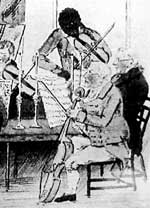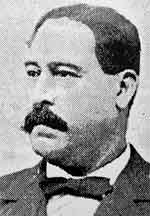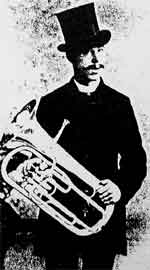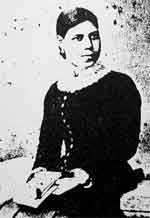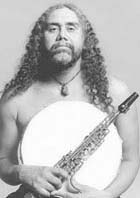 | |||||||

|
The Emidy Violin Concerto A Project from Jon Rose |
|
|
Brindes de Salis, West Indian by birth, became court violinist to the Queen of Spain in the early 19th century. George Bridgetower (1780-1860) was the half-caste son of an African father and dear old Ludwig Van B. wrote for him nothing less than the Kreutzer sonata. Chevalier St. George (1745-1799) was an extraordinary black composer and violinist. He was the son of the governor of Guadeloupe and a Senegalese slave. Like many outsiders, he over-achieved, and in true Gallic style, he became the best horseman and swordsman in France. Although by contemporary accounts he was also the best violinist and musician in town, his colour prevented him from getting the top gig - director of the Paris Opera. Chevalier J. J. O. de Meude-Monpas was a black musketeer in the service of Louis XVI of France. He left in a hurry for Berlin with the onset of the French Revolution, carrying his six concerti for violin under his arm. There's always been a strong connection between weaponry and the bow - remember that The Duke of Wellington only took up the military option 'cause he couldn't cut it as a violin player. José Silvestre de Los Dolores White y Lafitte (1835-1918) came originally from Cuba and at age eighteen was already performing his own compositions. He beat sixty applicants for a place at the Paris Conservatoire, worked in Spain and Brazil, and ended his days in Paris, having penned over 30 pieces for violin. And so to our main subject; Joseph Antonio Emidy (1775? - 1835). Joseph Emidy was an African slave, captured as a child on the Guinea Coast and, a few years later, taken by his master from Brazil back to Portugal. There, before the end of his teen years, he was performing as violinist in the Lisbon Opera Orchestra (after only four years tuition, allowed him by his enlightened master). Soon after, he was press-ganged into the British Navy for a period of seven years as ship's fiddler. He was eventually released not back into elegant Lisbon society but into the backwaters of Cornwall, England. He then went on, over the next thirty years, to become the most known composer, violinist, and teacher of southwest England. Not a single note of his compositions (symphonies and concerti) has survived. We know that his music was brought to London by anti-slavery activist James Silk Buckingham and given a hearing to some music critics, including impressario Salomon, who though impressed with the work, advised that Emidy remain outside of the capital's music circles because of his colour and background. Various artefacts including concert advertisements, press reviews and his gravestone in Truro, attest to the existence of Joseph Emidy, however not a note from his scores has ever been discovered. His music may have perished, but his genes are immortal, his grand children emmigrating to the USA where their children and children's children were involved in 'The Howe's Great London Circus and Sanger's English Menagerie of Trained Animals'. Offspring down the generations have been band musicians: one of the historic trumpets in the Smithsonian Museum supposedly came from an Emidy, there is talk of the 'family violin', and one of the great grandsons, Mixashawn Rozie, is a free jazzer, berimbow wiz, canoe designer, and champion of Indian rights. The story of Emidy and his descendents have attracted quite a following, and I am grateful to the research done by Professor Matthew Spriggs of the Australian National University who has contacted many members of the Emidy line, including the very organised and generous Cheryl Emidy Webb who forwarded the family tree and and some great heirloom photos of past Emidy's. I'm also extremely grateful to my friend and colleague Veryan Weston for enlightening me on this extraordinary bow stroke of history in the first place. As part of my on-going practice of revising, amending, and re-writing the history of violin music, I intend to actualise some of the missing music of this multi-cultural ghost. This will not be music posing as the real thing but an informed postmodern utilisation of the elements that probably influenced his musical character - West African rhythms, the Brazilian modinhas, the vivid street music of Lisbon, the formal classicism of composers like Haydn, Pleyel, and Johann Christian Bach, and English fiddle music. The aim of my research is a concerto for violin and chamber orchestra with African percussionist and interactive digital manipulations. The first movement is based on a theme of Romano Micheli, "O Voi Che Sospirate", 1621, subtitled 'The Impact of Catholic Colonialism on Two Unsuspecting Continents'. The excerpt that you are hearing is a reduced version for organ and violin and is played by Hollis Taylor for whom the concerto is written. The final orchestrated version of the concerto will consist of five other dance movements from Emidy's period, some of which will be located in digital sonic environments. For example: the British fiddle tunes will be treated as a cinematic soundtrack, taking place within the interior of an 18th century man o'war ship floundering at sea in the middle of a fierce storm. The solo violin line, that you are now listening to, is built of pitches that utilise the extended Lydian scale, causing the variations to float above the solid western tonality. The line is also swung and contains phrasing and techniques intentionally placed, outside classical violin technique, in the vernacular of fiddle and dance idioms. The score of this violin concerto will be available on request. JR |
 |
